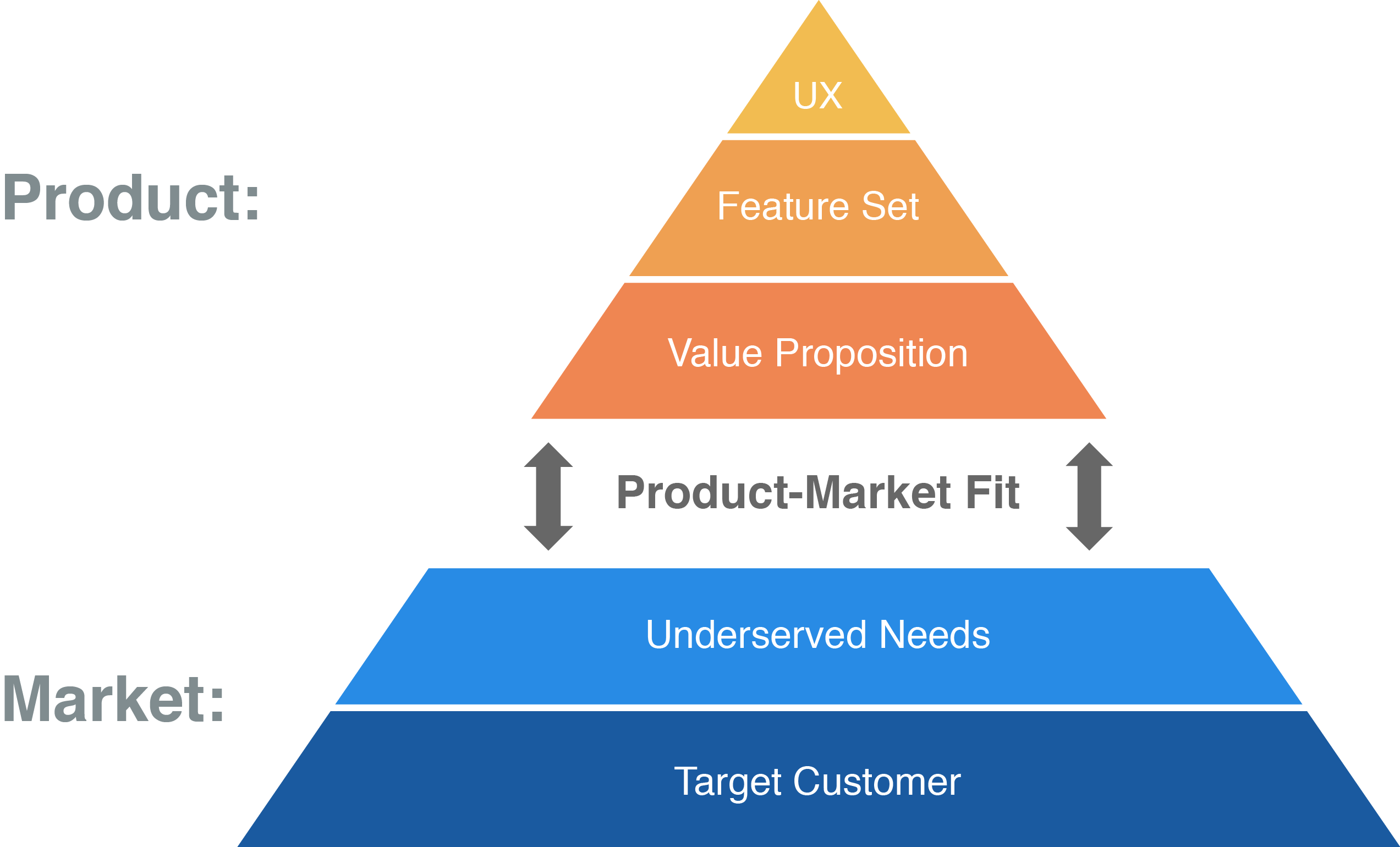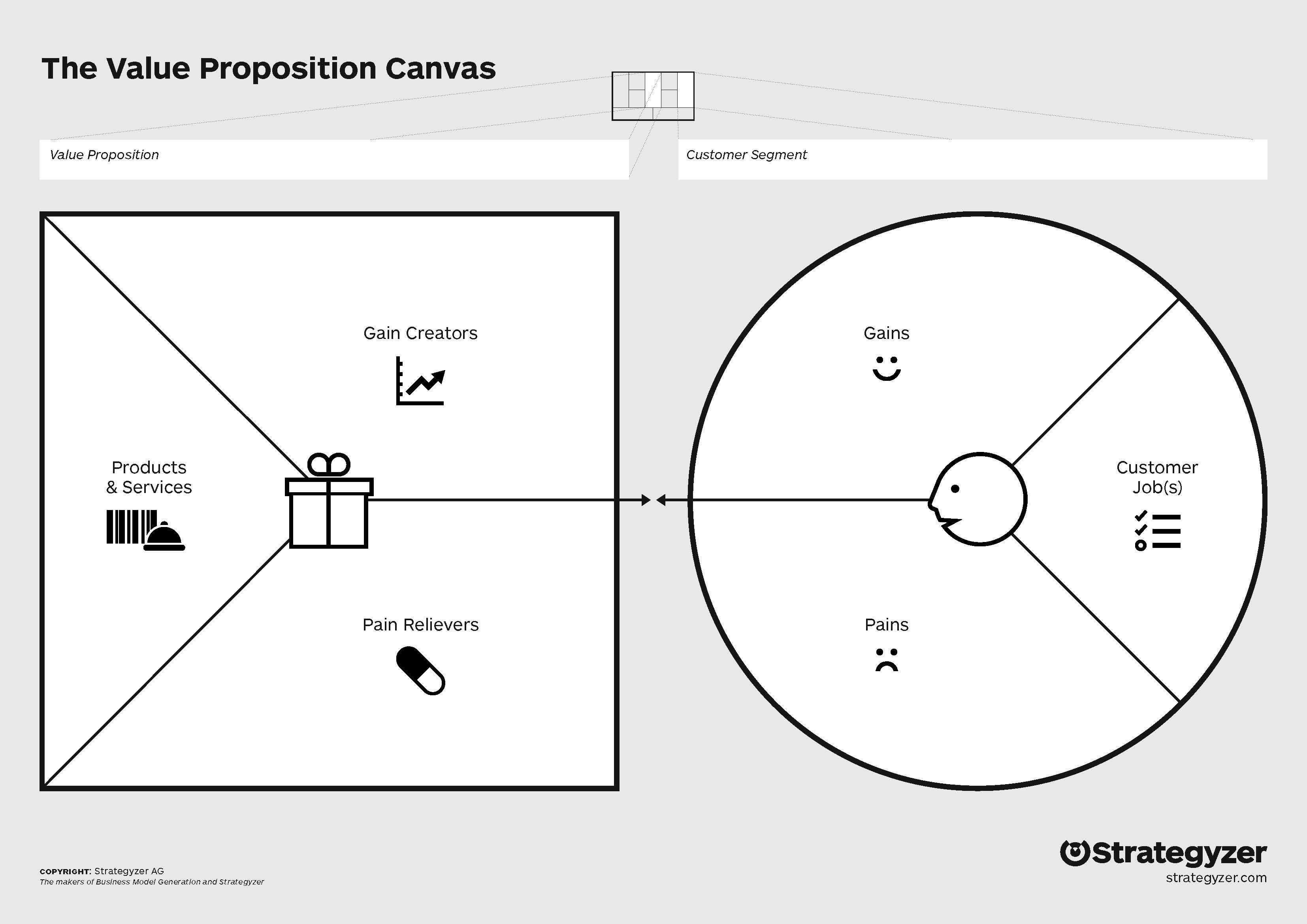Demystifying Product-Market Fit (Part 1): How to Win Customers and Dominate Your Market
By Team Lean Agile Intelligence

Understanding Product Market Fit
Product Market Fit (PMF) is not just a buzzword; it's the point at which your product's capabilities align with the wants and needs of your target market.
Product-market fit is essential because it determines a product's or service's viability and success in the market. Without it, businesses face significant challenges in attracting and retaining customers, generating revenue, and achieving sustainable growth. It ensures that your offering aligns with the needs and desires of your target market. Delivering a product or service that truly satisfies customer needs enhances customer loyalty, increases customer retention rates, and promotes positive word-of-mouth, ultimately leading to business growth.
Achieving product-market fit sets your offering apart from competitors. By identifying and meeting the unique needs of your target market, you can differentiate your product or service from others in the industry. Additional benefits include Market Differentiation, Reduced Marketing Costs, and Sustainable Growth.
Product Market Fit Origins
The term "product-market fit" was popularized by venture capitalist Marc Andreessen, co-founder of Andreessen Horowitz, in his blog post "The Only Thing That Matters" in 2007. In the blog post, Andreessen mentioned Andy Rachleff, a colleague and co-founder of Benchmark Capital, who initially coined the term.
The example of a company cited by Andy Rachleff as a case of successful product-market fit in his teachings and writings is Intuit, the software company behind products like QuickBooks, TurboTax, and Mint. Rachleff often refers to Intuit as a prime example of a company that achieved product-market fit by understanding the needs of small business owners and developing solutions that addressed their pain points effectively. Intuit's success in capturing the small business market and becoming a leading financial software provider is frequently referenced in discussions about product-market fit.
To quote from From "The Only Thing That Matters" blog post...
"Product/market fit means being in a good market with a product that can satisfy that market. You can always feel when product/market fit isn’t happening. The customers aren’t quite getting value out of the product, word of mouth isn’t spreading, usage isn’t growing that fast, press reviews are kind of “blah”, the sales cycle takes too long, and lots of deals never close. And you can always feel product/market fit when it’s happening. The customers are buying the product just as fast as you can make it—or usage is growing just as fast as you can add more servers. Money from customers is piling up in your company checking account. You’re hiring sales and customer support staff as fast as you can. Reporters are calling because they’ve heard about your hot new thing, and they want to talk to you about it. You start getting Entrepreneur of the Year awards from Harvard Business School. Investment bankers are staking out your house. You could eat free for a year at Buck’s."

Achieving Product Market Fit
Achieving PMF isn't an overnight task; it involves a multi-step process that includes hypotheses development, rigorous data analysis, and the establishment of compelling value.
Value Hypotheses
Creating a value hypothesis is a vital process in achieving Product Market Fit. It requires a well-defined understanding of your customer's problem and how your product provides a unique and efficient solution. Here are steps to create an effective value hypothesis:
Identify your target audience
Your target audience is potential users or customers most likely to benefit from your product. You should define them by their demographic characteristics, psychographics, buying behavior, and preferences. For example, if you're developing a language learning app, your target audience might be college students studying foreign languages, immigrants needing to learn the local language, or globetrotters wanting to communicate better during their travels.
Understand your audience's pain points
This step involves identifying the problems, needs, or desires of your target audience that your product seeks to address. One way of doing this is to use a Value proposition canvas with the "Jobs To Be Done" framework.
The "Jobs to be Done" (JTBD) theory is a framework that helps us understand the motivations behind why customers "hire" a product or service. It suggests that customers use a product or service to get a particular job done. It focuses on the problem a customer is trying to solve rather than the customer's characteristics.
JTBD and Value Hypothesis
The concept of JTBD is integral to crafting a value hypothesis. Here's how it fits:
1. Identifying the Job
The first step in developing a value hypothesis is understanding the "job" that your potential customers need to get done. This could be a task they want to accomplish, a need they want to satisfy, or a problem they want to solve. For instance, a customer might "hire" a drill not because they want a drill but because they need a hole in the wall.
Here are some tools and strategies to help you gain insights into customer jobs:
-
-
Customer Interviews: Conduct in-depth interviews with customers to understand the tasks, needs, and problems they are trying to accomplish, satisfy, or solve. Ask questions that explore their motivations, goals, and pain points related to the specific job. By listening to their experiences and challenges, you can gain valuable insights into the jobs they need to get done.
-
Observation and Ethnographic Research: Observe customers in their natural environments as they engage in activities related to the job. This can involve observing their behaviors, actions, and interactions with products or services. Ethnographic research allows you to understand the context, challenges, and nuances surrounding the job.
-
Customer Surveys: Include specific questions in surveys that probe into the jobs customers need to accomplish. Ask them about their goals, tasks, and desired outcomes related to the job. Surveys can provide quantitative data and help identify patterns and trends related to the jobs customers are trying to get done.
-
Contextual Inquiry: Engage in contextual inquiry, a subset of Ethnographic research, by directly observing customers in their environment and engaging in conversations while they perform the job. This approach provides a rich understanding of the job's context, challenges, and the broader ecosystem in which the job exists.
-
Competitive Analysis: Analyze competitors' products and services to understand how they address similar jobs. Identify gaps or areas of improvement where your solution can offer a unique value proposition.
-
2. Understanding the Customer's Pain Points
Once you identify the "job," delve deeper to understand customers' difficulties when doing this job. These pain points might be the steps involved, the time it takes, or the tools they have to use. Using the drill example, pain points could be the noise it makes, the weight of the tool, or the clean-up required afterward.
Here are some recommended tools and processes to gain insights into customer pain points:
-
-
Customer Surveys: Conducting customer surveys allows you to gather direct feedback from your target audience. Design surveys that include specific questions about their challenges, frustrations, and areas where they seek improvement. Analyze the survey responses to identify common pain points and prioritize them based on frequency and severity.
-
User Interviews and Focus Groups: Engage with customers through one-on-one or group sessions to dive deeper into their pain points. Ask open-ended questions to encourage them to share their experiences, challenges, and frustrations. This qualitative research approach provides rich insights and helps uncover pain points that may not have been apparent through other methods.
-
User Observation and Shadowing: Observe users in their natural environment as they interact with products or perform tasks related to your industry. This method lets you observe pain points firsthand and better understand users' challenges. By shadowing users, you can identify pain points that they might not explicitly communicate but are evident in their behavior.
-
Customer Support and Feedback Channels: Monitor customer support interactions, such as help desk tickets, support calls, and online feedback channels. Analyzing customer complaints, inquiries, and suggestions can reveal recurring pain points and areas for improvement. Look for patterns and common themes in the feedback to identify the most significant pain points.
- User Testing and Prototyping: Develop prototypes or minimum viable products (MVPs) to test with customers. By observing how customers interact with your prototype or MVP, you can gain insights into their tasks, obstacles, and the solution's overall effectiveness in addressing their job.
-
Data Analytics: Utilize data analytics tools to analyze customer behavior, usage patterns, and engagement metrics. By studying user data, you can identify pain points based on customer actions, drop-off points in the user journey, or areas where users spend an unusually long time. These insights can guide you in addressing pain points and optimizing the user experience.
- Social Media Listening: Monitor social media platforms, online communities, and forums where customers discuss their needs, challenges, and the jobs they are trying to accomplish. This can provide real-time insights into the language, frustrations, and aspirations associated with specific jobs.
-
Combining these tools and processes is important to understand customer pain points holistically. Each method provides unique insights and can contribute to a comprehensive understanding of your customer's needs, challenges, and opportunities for improvement.
3. Define how your product resolves these pain points
You specify how your product addresses your audience's identified pain points at this stage. You can combine JTBD with the Value Proposition Canvas approach.
The Value Proposition Canvas is a tool that helps businesses understand what their customers want and how they can deliver it effectively. Alexander Osterwalder developed it with two main components: the Customer Profile and the Value Map.
JTBD and Value Proposition Canvas
Here's how the JTBD theory is integrated into the Value Proposition Canvas:
1. Customer Profile
This part of the canvas focuses on the customer. It consists of the following:
-
-
Customer Jobs: These are the tasks the customers are trying to get done. It could be a problem they're trying to solve, a need they're trying to satisfy, or an objective they're trying to achieve. In the context of JTBD, this is the "job" the customer needs to be done.
-
Pains: These are the negative outcomes, risks, and obstacles related to customer jobs. It represents the difficulties customers encounter when trying to get the job done.
-
Gains: These are the positive outcomes and benefits that the customers want to achieve. It represents what customer success looks like.
-
2. Value Map
This part of the canvas focuses on the product or service being offered. It consists of:
-
-
Products and Services: These products or services help customers get functional or social jobs done or help them satisfy basic needs.
-
Pain Relievers: These are how your products or services alleviate customer pains. They explicitly outline how you intend to eliminate or reduce the pains customers experience trying to get their job done.
-
Gain Creators: These are how your products or services create customer gains. They outline how you intend to produce outcomes and benefits that the customer expects, desires, or would be surprised by.
-
In essence, the Value Proposition Canvas using JTBD theory helps to align what you're offering (Value Map) with what your customers need and value (Customer Profile). It's a powerful tool for developing products or services that truly fit the market.
Articulate your Unique Value Proposition (UVP)
Your Unique Value Proposition (UVP) sets your product apart from competitors. It's the unique benefit or feature that makes your product stand out.
Here's an example of a Unique Value Proposition (UVP) for a language-learning app:
"SpeakMaster: Master Language Fluency with Realistic AI Conversations and Real-Time Progress Tracking"
In this example, the UVP highlights two unique features that set the language learning app apart from competitors:
-
Realistic AI Conversations: SpeakMaster is the only language learning app with advanced AI technology to provide users with realistic conversation practice. Through AI-powered conversations, learners can engage in interactive dialogues that simulate real-life language interactions, enhancing their speaking and listening skills in an immersive and authentic way.
-
Real-Time Progress Tracking: SpeakMaster offers real-time progress tracking to keep learners motivated and engaged. Users can easily monitor their language learning journey, track their proficiency growth, and receive personalized feedback on their performance. This feature adds a sense of achievement and enables learners to stay on track and celebrate their progress.
By combining these unique features, SpeakMaster differentiates itself from other language-learning apps. Learners are attracted to the app because it offers an innovative and interactive approach to language acquisition, providing them with a more engaging and effective learning experience.
Test your value hypothesis
Once you've constructed your value hypothesis, it's crucial to test it. This can be achieved by releasing a Minimum Viable Product (MVP) to a small segment of your target audience and gathering feedback. Does the language learning app resonate with users? Are they finding it helpful in their language-learning journey? Do they feel it's worth the cost? The feedback will either validate your value hypothesis or indicate areas for improvement. The Value hypothesis for the language learning app might be: "College students and immigrants struggling with conventional and expensive language learning methods will find our app useful because it provides an affordable, interactive, and community-driven platform for mastering a new language, with unique features such as AI-powered conversational practice and real-time progress tracking."
You can also perform some initial value hypothesis testing in the discovery phase. This can help formulate the hypothesis but should not replace user feedback using an actual working product. Here are a few techniques for discovery value hypothesis testing.
-
Surveys and Interviews: Create surveys or conduct interviews with your target audience to gather insights on their needs, pain points, and potential interest in your proposed product. Ask questions about the value you intend to deliver and gauge their reactions, preferences, and willingness to pay. This feedback can help you validate your value hypothesis and refine your product concept.
-
Prototype Testing: Develop low-fidelity prototypes or mock-ups of your product idea to share with potential users. This could be a simple interactive wireframe or a clickable prototype. Collect feedback on the concept, user experience, and perceived value. Iterate on the prototype based on user feedback and refine your value hypothesis accordingly.
-
Landing Page or MVP Validation: Create a landing page or lightweight minimum viable product (MVP) that showcases your product's key features, benefits, and value proposition. Use this as a test to measure user interest, engagement, and conversion. Analyze the data collected, such as click-through rates, sign-ups, or conversions, to gauge user interest and validate your value hypothesis.
It's crucial to note that a value hypothesis is not a static statement. It evolves with market feedback, competitive landscape changes, and shifts in your business strategy. Always be prepared to revisit and revise your value hypothesis to maintain your product's relevance and value in the market.
Conclusion
In conclusion, achieving Product Market Fit (PMF) is crucial for the success and viability of a product or service in the market. PMF occurs when the capabilities of a product align with the needs and desires of the target market. Without PMF, businesses face challenges in attracting and retaining customers, generating revenue, and achieving sustainable growth.
PMF brings several benefits to a business. It enhances customer loyalty and retention rates by delivering a product or service that truly satisfies customer needs. Positive word-of-mouth is generated, leading to increased brand awareness and customer acquisition. Differentiating the offering from competitors becomes possible by identifying and meeting the unique needs of the target market. This differentiation reduces marketing costs and creates opportunities for sustainable growth.
By achieving Product Market Fit, businesses can position themselves for success by offering a product that meets the needs of their target market, differentiating themselves from competitors, and driving sustainable growth. However, achieving Product Market Fit is only the first part, of the whole process. Businesses need to continue to monitor and maintain product market fit. Check out part 2 of our Demystifying Product-Market Fit series to learn more about how to maintain and monitor product market fit.

